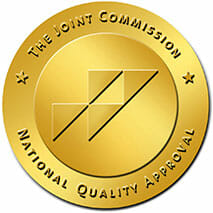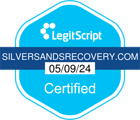Generational Breakdown of Opioid Addiction
The opioid epidemic is a public health emergency, with 136 deaths per day and climbing.1 Opioid addiction treatment is available, but almost 50,000 people die every year from opioid overdose, resulting in 7 out of 10 overdose deaths.2
Furthermore, the most common substance exposure reported to poison control centers is illegal or misused prescription opioids.3
Different generations have varying rates of opioid addiction, but which age group is the highest? To answer this question, let’s examine recent data and trends.
Opioid Use General Statistics
According to Drug Abuse Statistics:4
- 10.1 million or 3.7 percent of Americans misuse opioids at least once annually
- 1.6 million or 15.8 percent of Americans qualify as having an opioid use disorder
- 9.7 million or 96.6 percent of opioid misusers have prescription pain relievers
- Hydrocodone is the most popular prescription opioid, with 5.1 million misusers
Opioid Use Among Millennials and Baby Boomers
According to findings from 2017, baby boomers and millennials were most heavily impacted by the opioid epidemic.
Baby boomers (people born between 1946 and 1964) have heightened death rates from prescription opioids and heroin, while heroin overdoses have impacted millennials (people born between 1981 and 1995).5
Based on these findings, Dr. Guohua Li, a professor of epidemiology at Columbia University, identifies baby boomers as the highest risk. He noted that the findings on baby boomers aren’t surprising, however, since this generation is known to have a high rate of drug use relative to other generations.6
Why? Baby boomers were middle-aged when prescription opioids were available in the 1990s, making them a target for the medication.7 In addition, health conditions that develop with age often lead to prescription painkillers, giving this generation a larger exposure to addictive medications and possible misuse.
With millennials, the reasons are not as clear. The rate of heroin overdose death accelerated among millennials, but there’s no identifiable contributing factor. However, financial insecurity in this generation may contribute to it.
Opioid Use Among Gen Z
Like millennials, Gen Z runs a higher risk of developing substance use problems. According to the National Institute on Drug Abuse, 23.6 percent of students in twelfth grade used illicit drugs in 2015.8 Gen Z is at high risk for substance use disorders for various reasons, including loneliness, poor mental health, and lack of access to affordable healthcare.
However, this study included many different substances, such as synthetic marijuana, cigarettes, alcohol, and prescription opioid pain relievers. Overall, the study indicated that illicit substance use isn’t increasing, recreational use of prescription opioids is decreasing, and the consumption of legal substances like alcohol and cigarettes is improving.
This study revealed some other key information, including decreased recreational use of non-prescription opioids in high school seniors. At the time of the study, 4.4 percent of high school seniors reported recreational use of opioids, compared to 10.5 percent in 2003.
It’s important to note that teens and young adults misusing prescription opioids report getting them from friends or family, and a third stated they have their own prescription. This is a crucial consideration in prescribing opioids for teens and young adults.
Overdose Deaths by Age Group
The Henry J. Kaiser Family Foundation examined the statistics for overdose deaths in the U.S. by age group in 2019, compiled from the Centers for Disease Control and Prevention and the National Center for Health Statistics. Multiple cause-of-death mortality files were used to identify drug overdose deaths.
This research included overdose as an underlying cause, overdose using natural and semisynthetic opioids, methadone, synthetic opioids other than methadone, and heroin. Illegally produced fentanyl can’t be distinguished from pharmaceutical-grade fentanyl, so both are included in this data.
Overdose deaths grouped by age bracket:
- 0-24: 3,683
- 25-34: 13,309
- 35-44: 12,425
- 45-54: 10,015
- 55+: 9,290
The total number of overdose deaths for this study was 49,860.9
Opioid Addiction Treatment at Silver Sands Recovery
While opioids can affect any age group, research indicates a correlation between at-risk groups and the availability of prescription and non-prescription opioids. Factors like mental health conditions, age-related pain, and relaxed prescribing practices may contribute to opioid misuse.
If you or a loved one are seeking opioid addiction treatment, our team of compassionate professionals at Silver Sands Recovery can help. We’re a rehab center in Prescott, Arizona for drug addiction treatment and a trusted partner in recovery and long-term sobriety. We share in our client’s motivation to achieve sobriety and treat the mental, emotional and physical challenges with tailored treatment plans. Please contact our team to learn more and take the first step to live sober.
Sources:
[1] https://drugabusestatistics.org/opioid-epidemic/
[2] https://drugabusestatistics.org/opioid-epidemic/
[3] https://drugabusestatistics.org/
[4] https://drugabusestatistics.org/
[5] https://www.upi.com/Health_News/2017/11/21/Opioid-crisis-hitting-boomers-millennials-hardest/5051511319886/
[6] https://www.upi.com/Health_News/2017/11/21/Opioid-crisis-hitting-boomers-millennials-hardest/5051511319886/
[7] https://www.drugabuse.gov/publications/substance-use-in-older-adults-drugfacts
[8] https://www.nih.gov/news-events/news-releases/drug-use-trends-remain-stable-or-decline-among-teens
[9] https://www.kff.org/other/state-indicator/opioid-overdose-deaths-by-age-group/?currentTimeframe=0&sortModel=%7B%22colId%22:%22Location%22,%22sort%22:%22asc%22%7D
About the author:

Lisa Waknin is the Founder and Director of Silver Sands Recovery, located in Prescott, Arizona. Lisa started Silver Sands Recovery after immersing herself in the addiction treatment world for several years to figure out what could be done differently to help her daughter and others like her to overcome addiction and stay sober. She believes in a hands-on treatment approach, which includes taking someone out of their environment, providing a 90-day program in a structured environment. During treatment, clients not only recover physically but also learn to live their life again. Lisa is a sought-after expert speaker for recovery support groups, charities, schools, communities, and companies wanting to educate themselves on the explosion of opiate and heroin abuse in our country and the best way to understand, treat, and beat it.





